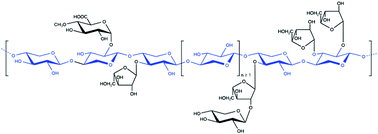The kinetics of Brønsted acid-catalyzed hydrolysis of hemicellulose dissolved in 1-ethyl-3-methylimidazolium chloride†
Abstract
The conversion of plant biomass provides a sustainable pathway towards the production of renewable

* Corresponding authors
a Energy Biosciences Institute, Calvin Laboratory, University of California, Berkeley, California
b
University of California, Berkeley, 107 Gilman Hall, University of California, Berkeley, California
E-mail:
alexbell@cchem.berkeley.edu
The conversion of plant biomass provides a sustainable pathway towards the production of renewable

 Please wait while we load your content...
Something went wrong. Try again?
Please wait while we load your content...
Something went wrong. Try again?
K. R. Enslow and A. T. Bell, RSC Adv., 2012, 2, 10028 DOI: 10.1039/C2RA21650G
To request permission to reproduce material from this article, please go to the Copyright Clearance Center request page.
If you are an author contributing to an RSC publication, you do not need to request permission provided correct acknowledgement is given.
If you are the author of this article, you do not need to request permission to reproduce figures and diagrams provided correct acknowledgement is given. If you want to reproduce the whole article in a third-party publication (excluding your thesis/dissertation for which permission is not required) please go to the Copyright Clearance Center request page.
Read more about how to correctly acknowledge RSC content.
 Fetching data from CrossRef.
Fetching data from CrossRef.
This may take some time to load.
Loading related content
